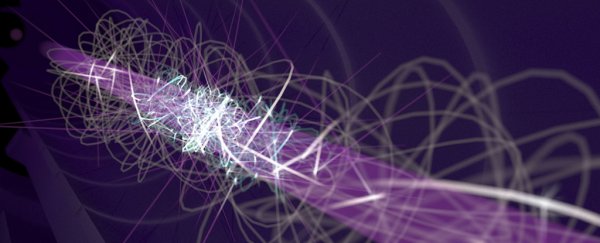In a mirror Universe where time runs backwards, swapping matter for antimatter should simply bring us full circle and reproduce the reality we're all familiar with. Our Universe and the bizarro antimatter Mirrorverse would look identical.
But what if it didn't? As unlikely as that would be in today's physics, the possibility might open a whole new landscape for researchers to explore, making it a question worth our time pursuing.
Unfortunately antimatter isn't the easiest thing to study. It's a pain to produce, prone to vanishing in a puff of gamma rays when it meets ordinary matter, and even when you collect enough to examine, it's zooming around at breakneck speeds.
For some studies, this isn't necessarily a huge problem. But if you want to, say, measure gravity's soft pull on its tiny particles, it really ought to be sitting as still as possible.
The ALPHA experiment at the European Organization for Nuclear Research (CERN) has been working on a way to slam the brakes on antimatter particles for a few years now through a clever application of carefully tuned lasers.
Those experiments have finally borne fruit, successfully slowing antihydrogen particles (the antimatter counterpart to hydrogen, the lightest of all elements) from the speed of a Formula 1 racer to the pace of a car cruising down a suburban street.
We've already managed to bring ordinary matter to a virtual standstill by mixing and matching a variety of methods that funnel energy out of their immediate environment. Slowing antimatter is more of a challenge, demanding methods that don't include it bumping into particles of matter, since this would result in it immediately disintegrating into a flash of radiation.
Decelerator technology has already managed to slow whole atoms of antimatter from near light speed to something more manageable in recent decades. It's enough to allow physicists to conduct at least a few tests, such as teasing apart the spectrum of antihydrogen.
So far results from these studies have shown hydrogen and antihydrogen are more or less identical, aside from their flipped charges. Which is a bit disappointing really – any difference might tell us why one form of matter has persisted over the other to create the Universe we've all come to know and love.
Still, there's a distant chance that in spite of having the same masses, gravity might love one a bit more than the other. Or perhaps some other force has a subtle influence over antimatter in ways we're not yet clued in on.
To get a good measure on these things, we need to slow antimatter down further: ALPHA's process slows the anti-atoms down by pelting them with photons in a way that doesn't inadvertently stir them up at the same time.
Just like ordinary atoms of hydrogen, antihydrogen atoms can absorb and scatter photons to lose or gain momentum. This effect only occurs if the light is at the right frequency. Too high or too low, the light waves will pass right on by.
The researchers tuned the lasers just right to take into account the speed of antihydrogen rushing towards the source, ensuring the photons are at the perfect frequency as they meet. After around a dozen collisions, a particle moving at around 300 kilometers (just over 180 miles) per hour can be slowed to below 50 kilometers (about 30 miles) an hour.
Conversely, particles rushing away from the laser are invisible to its relative frequency, avoiding an accelerating kick in the bum.
"With this technique, we can address long-standing mysteries like: 'How does antimatter respond to gravity? Can antimatter help us understand symmetries in physics?'" says Takamasa Momose, a physicist from the University of British Columbia and one of ALPHA's Canadian team.
"These answers may fundamentally alter our understanding of our Universe."
We'll need to wait a little longer before we see the results of such experiments, and prepare ourselves for the possibility that even at a leisurely stroll, antimatter's secrets will be hard to see.
But maybe, just maybe, this is how we get a glimpse into that mirrored, time-flipped, anti-Universe that looks far more alien than our best theories currently imagine.
This research was published in Nature.
